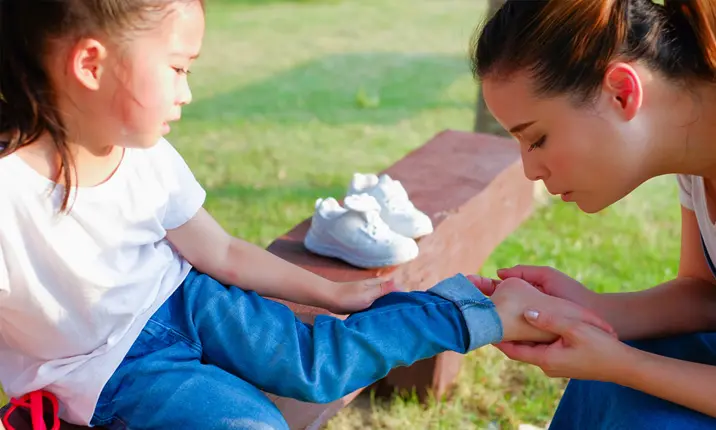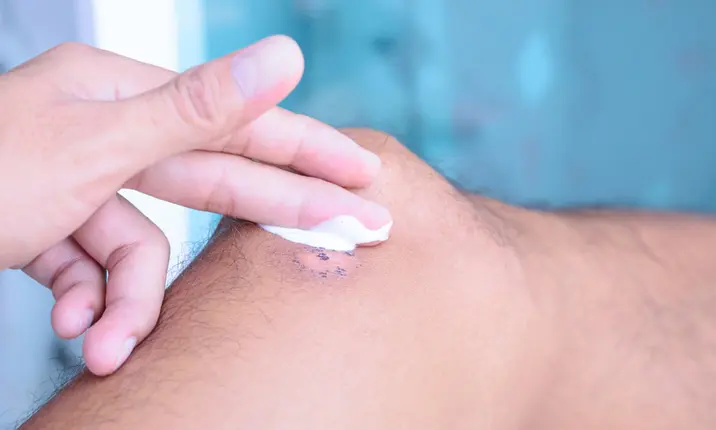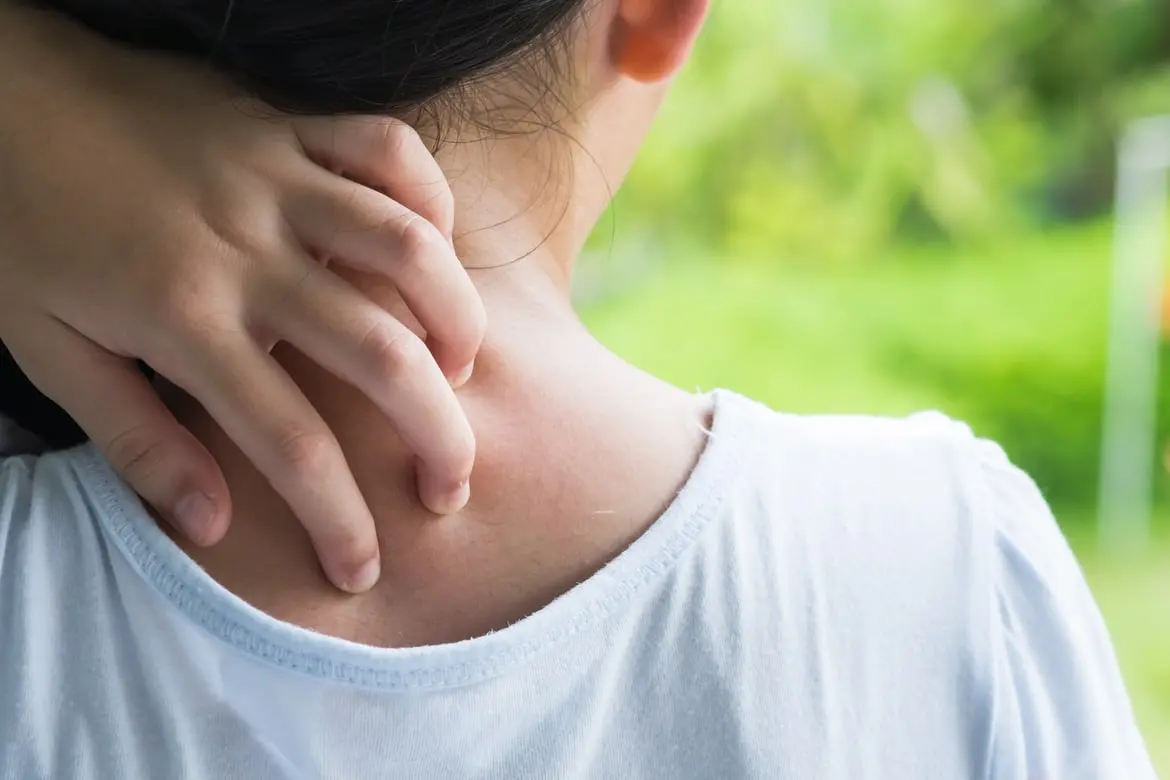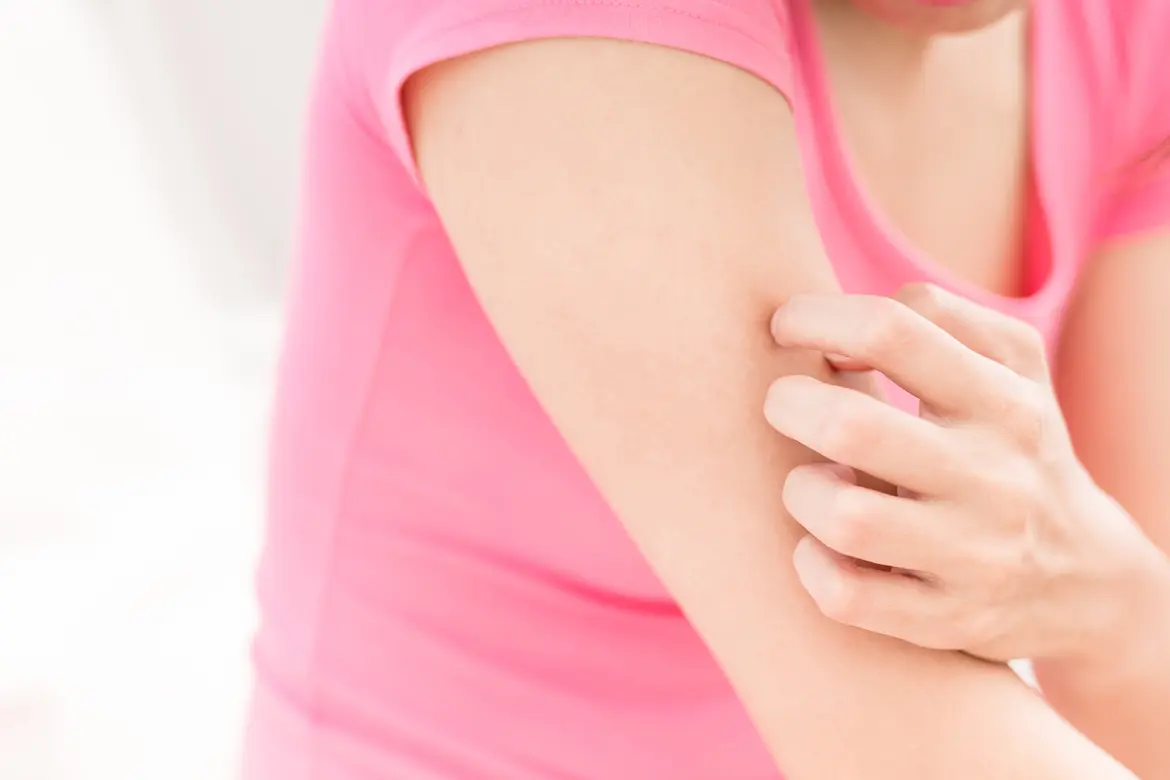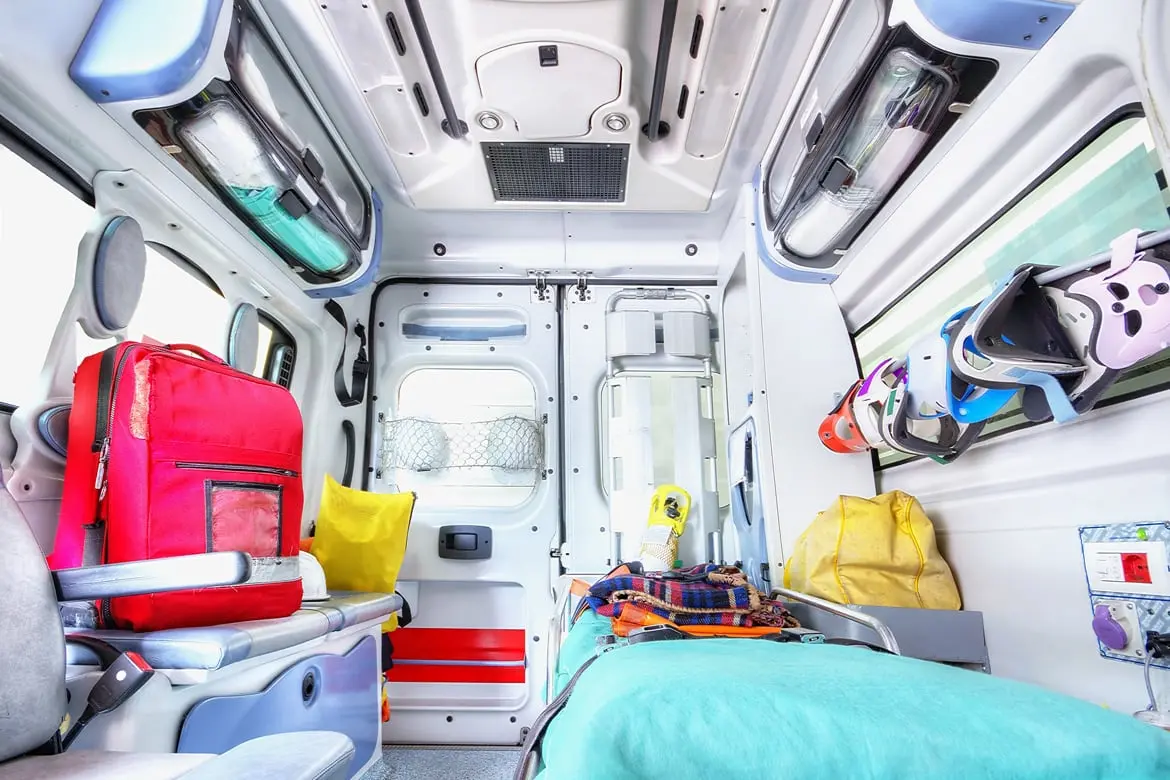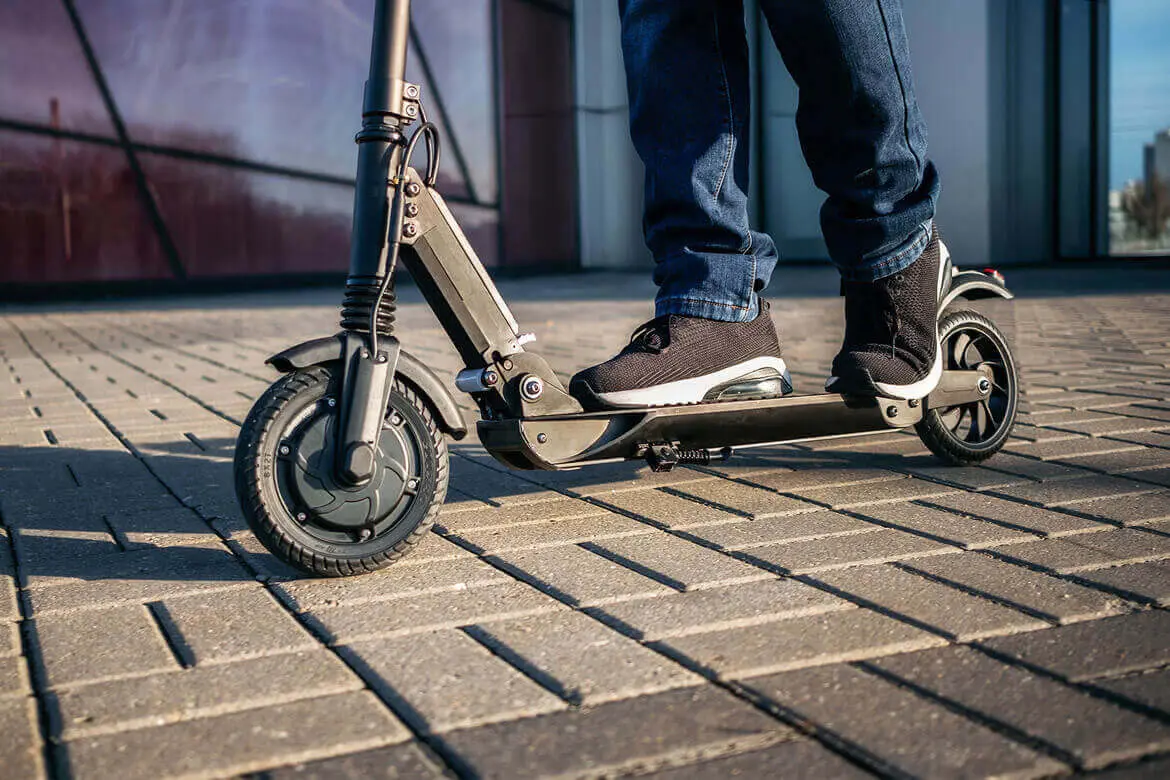-
-
Featured Care Areas

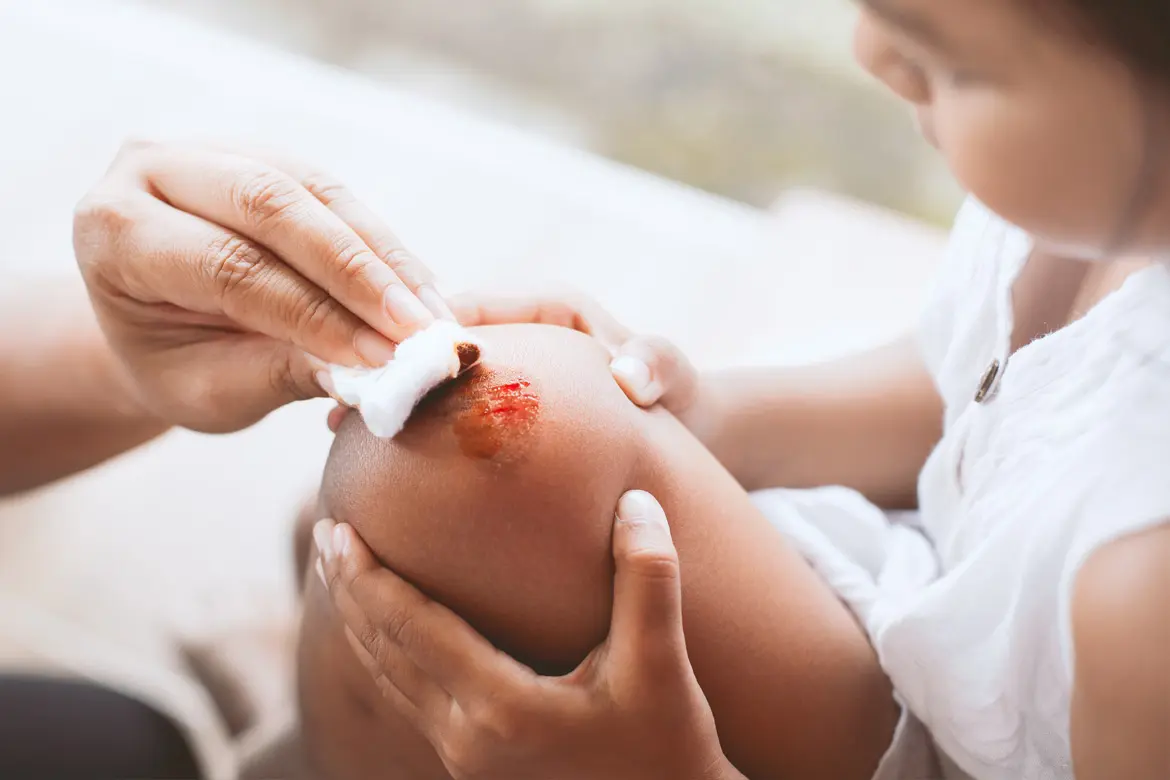
Source: Shutterstock
Cuts and Lacerations: When are Stitches Needed?
Last updated: Thursday, October 7, 2021 | 5 min reading time
Open wounds, if not properly cared for, may not heal properly or even get infected. Learn more about treating them at home and when you need treatment by a medical professional.
Most people are likely to experience an open wound at some point. However, while most household accidents are likely to be minor and easily treated at home, there are times when an open wound requires more urgent attention. These include serious wounds that involve significant bleeding or broken bones.
What are open wounds?
An open wound refers to an injury to the tissue, usually when the skin has broken and internal tissues are exposed. These can range from scrapes and skinned knees to cuts from sharp objects like knives and other bladed instruments.
In contrast, a closed wound means that tissue damage and bleeding occur under the surface of unbroken skin. Bruises are examples of closed wounds.
Most of the time, these open wounds are minor and heal without medical intervention. However, there are times when injuries are more severe, requiring stitches and medical attention to heal properly.
When do you need urgent medical attention?
In cases like these, you need to be able to determine if immediate medical attention is required, as the risk of infection increases the longer the wound is left open.
Types of open wounds
Open wounds can be classified into 5 different types.
Abrasion
An abrasion is when your skin gets rubbed or scraped against a hard and/or rough surface, such as falling down on a road. In this type of open wound, the skin is broken and there is minimal bleeding. Abrasions need to be properly cleaned of any debris, such as sand or other particles, and treatment applied to prevent infection.
Puncture
A puncture usually means a small hole in the tissue. These can be caused by anything ranging from small things like needles or nails, to bigger things like ice picks or knives. Similarly, a puncture wound may be shallow or deep, with deep punctures more likely to cause more bleeding and damage to tissues and organs.
Avulsion
An avulsion occurs when the skin and underlying tissue is partially or completely torn away. This is often the result of violent accidents such as animal attacks or road accidents.
Cuts and lacerations
Cuts and lacerations refer to tears or openings in the skin, often caused by sharp, edged objects like kitchen knives, razor blades and scissors. Such wounds can cause significant bleeding.
Should I visit the Urgent Care Centre (UCC) for medical care?
The urgency of the injury largely depends on the length, depth, and location of the wound, and the extent of bleeding. Seek medical help immediately at a hospital's Urgent Care Centre (UCC) if your injury is wide, jagged, or deep with persistent bleeding.
When you should seek urgent medical care for open wounds
The following are signs that you should seek medical care immediately.
- Deep enough such that the yellow fatty tissues under the skin can be seen
- Discolouration of the skin (darkening or cyanotic)
- Gaping wide enough that gentle pressure cannot close the wound
- Located on a joint as that could mean damaged nerves, tendons or ligaments
- Muscle weakness or paralysis in the affected area
- Numbness around the area
- Or on a cosmetically significant area (eg. face)
- Persistent bleeding
Apart from these, the cause of the injury is also important. If it is the result of an animal bite or a dirty/rusty object, you may need a tetanus or rabies booster alongside oral antibiotics.
For children that have had their vaccinations, these injuries still require medical evaluation.
If in doubt, always check in with a doctor or nurse if stitches are required.
What do I do on the way to the UCC?
Knowing how to properly apply first aid can reduce bleeding and prevent infection. Here are some general care steps you can take while on the way to the UCC.
- Clean the wound gently. Thoroughly irrigate the injured area using tap water or saline solution.
- Do not attempt to remove foreign objects stuck in the wound. Not knowing how severe the injury is can risk serious consequences – such as unblocking an arterial blood flow when the foreign object is removed.
- Elevate injured area on the way to the UCC.
- Stop the bleeding with direct pressure.
How are open wounds treated?
Stitches are one of the most common ways of closing a wound. They stop bleeding, protect underlying tissue, reduce risks of infection and lessen scarring. Other methods include surgical staples and skin closure adhesives.
Home care to treat minor wounds
To treat minor wounds at home, first wash your hands, then clean the wound thoroughly with clean water or saline to remove any dirt or debris. You may need to use tweezers to remove particles if they don't rinse off easily.
Next, gently pat the area dry and disinfect the wound with an antibiotic cream or ointment to prevent infection. Finish by covering the wound with a sterile plaster or piece of gauze secured with surgical tape. Keep the area dry and perform daily cleaning and dressing for a few days until it heals.
If the bleeding won't stop, the wound does not appear to be healing properly, or appears to be getting worse, visit a doctor for immediate medical advice and treatment.
Medical treatment
More serious injuries require the attention of a medical professional to properly clean and treat the wound. This may include debridement, which is a thorough cleaning using various methods, followed by closing of the wound using skin glue, sutures or stitches.
Depending on the nature of the wound and the risk for infection, it may be left uncovered, dressed and covered, or packed with gauze.
You may also be prescribed with painkillers to manage the pain and antibiotics to help prevent infection.
What are the different types of stitches?
There are 2 main types – absorbable and non-absorbable stitches.
Absorbable stitches
Absorbable stitches need not be removed as they rapidly break down and lose their holding strength between 5 – 60 days. These are more commonly used for internal injuries.
Non-absorbable stitches
Non-absorbable stitches may last from 6 months to 2 years, depending on the type and size. They will require removal by a medical professional once the wound is healed. These are more commonly used for external wounds, and will quite likely be the type of stitches you'll be getting.
Are stitches painful?
Fret not – numbing medication will be applied to the injury for a painless experience. The stitch site will then be covered in gauze and a bandage.
When will the stitches be taken out?
Stitches are removed after a period ranging from 4 – 14 days. Facial stitches are often removed no later than 7 days as healing takes place faster as compared to other parts of the body. Stitches on limbs usually require the longest healing period and might extend past 14 days.
The doctor will advise on exactly when the sutures will be removed. In some cases, there may be removal of alternating sutures. This means that not all sutures on a wound will be removed in one sitting.
You can expect to have your stitches removed as follows:
- Face: 3 – 5 days
- Scalp: 7 – 10 days
- Arms, Legs: 10 – 14 days
- Joints: 14 days or more
What are some possible complications I may encounter after having stitches?
See the doctor immediately if you notice these signs of infection:
- Darkening of the would
- Increased swelling
- The presence of pus or any foul-smelling discharge
- Progressive pain and tenderness around the wound
- Fever
What should I do after receiving stitches?
After having your wound stitched up, proper care is required so that the cut heals well and does not get infected.
Here is some general advice to take note of:
- Keep stitches dry and covered with a bandage. Non-absorbable stitches need to be kept dry for the first 1 – 2 days, while absorbable stitches have to be kept dry longer (as per instruction).
- For the days after, gently wash the wound area with soap and water. Do not let it soak in a bath or in a pool – Having it wet for long periods slows the healing and increases the chances of getting an infection.
- Pat the wound dry and apply prescribed ointments after your shower.
- Take a break from the gym and other rigorous activities that put a strain on the stitches. If it breaks, the cut will reopen.
What can I do after the stitches are taken out?
Heed the doctor's recommendation. If you are concerned about scarring, seek the doctor's input on recommended creams and lotions. Protect the scar from the sun with sunscreen and covered clothing.
However, should you have any questions or concerns about the severity of your injury, make your way down to the UCC to seek immediate medical attention.
Think Prevention!
To reduce the risk for injuries and open wounds, always take precautions in all that you do. This includes taking extra steps to childproof all table corners, store sharp objects securely, use stoppers to prevent doors from slamming shut, use anti-slip materials under rugs and keep walkways clear to reduce the risk of tripping and falling. Let's keep mishaps at bay!
During a medical emergency in Singapore, you can also call +65 6473 2222 for an ambulance that will transport you to the nearest hospital or a hospital of your choice. Learn more about Parkway Emergency services.
(14 August 2014) Laceration or incised wound: Know the difference. Retrieved 11 June 2019 from https://www.acepnow.com/article/laceration-incised-wound-know-difference/
(6 August 2015) Does your cut need stitches? Find out how to tell. Retrieved 9 June 2019 from https://health.clevelandclinic.org/does-your-cut-need-stitches-find-out-how-to-tell/
(n.d.) Removing stitches (Sutures). Retrieved 9 June 2019 from https://www.emedicinehealth.com/removing_stitches/article_em.htm
(June 28, 2018) Closure of minor skin wounds with sutures. Retrieved 11 June 2019 from https://www.uptodate.com/contents/closure-of-minor-skin-wounds-with-sutures
(17 September 2018) Open Wound. Retrieved 15 September 2021 from https://www.healthline.com/health/open-wound
(23 May 2019) What to know about open wound care. Retrieved 15 September 2021 from https://www.medicalnewstoday.com/articles/325260
(29 October 2019) Cuts and scrapes: First aid. Retrieved 15 September 2021 from https://www.mayoclinic.org/first-aid/first-aid-cuts/basics/art-20056711
(2 November 2020) What Is the Fastest Way to Heal an Open Wound? Retrieved 15 September 2021 from https://www.medicinenet.com/what_is_the_fastest_way_to_heal_an_open_wound/article.htm
(n.d.) Debridement. Retrieved 15 September 2021 from https://surgery.ucsf.edu/conditions--procedures/debridement.aspx
(6 August 2015) Does your cut need stitches? Find out how to tell. Retrieved 9 June 2019 from https://health.clevelandclinic.org/does-your-cut-need-stitches-find-out-how-to-tell/
(n.d.) Removing stitches (Sutures). Retrieved 9 June 2019 from https://www.emedicinehealth.com/removing_stitches/article_em.htm
(June 28, 2018) Closure of minor skin wounds with sutures. Retrieved 11 June 2019 from https://www.uptodate.com/contents/closure-of-minor-skin-wounds-with-sutures
(17 September 2018) Open Wound. Retrieved 15 September 2021 from https://www.healthline.com/health/open-wound
(23 May 2019) What to know about open wound care. Retrieved 15 September 2021 from https://www.medicalnewstoday.com/articles/325260
(29 October 2019) Cuts and scrapes: First aid. Retrieved 15 September 2021 from https://www.mayoclinic.org/first-aid/first-aid-cuts/basics/art-20056711
(2 November 2020) What Is the Fastest Way to Heal an Open Wound? Retrieved 15 September 2021 from https://www.medicinenet.com/what_is_the_fastest_way_to_heal_an_open_wound/article.htm
(n.d.) Debridement. Retrieved 15 September 2021 from https://surgery.ucsf.edu/conditions--procedures/debridement.aspx
